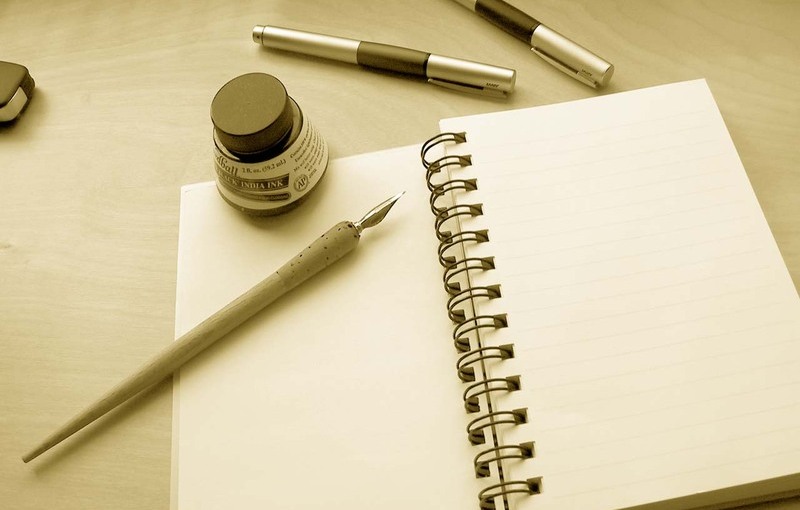If you’re at the pen to catch the attention of the masses that are super-saturated with the written word, there are some guidelines as well as thumb rules you should do well to adhere to. Writing is like a flower, it evolves from an inconspicuous, unremarkable bud to a widely admired blossomed delight.
The first step to becoming a veteran writer is to be an avid reader. Exposure to ideas, worlds and characters- both real and unreal; living, dead, vampire or werewolf; Heaven, Earth and Mars- will constructively impact your perception of both fiction and fantasy.
When your confidence has reached its peak, seek your pen or your keyboard. Begin with either poems or short reflections of everyday life. Remember that expression creates an impression. After making the first draft, scout words that could be replaced with more powerful analogues, sentences that could be constructed in a more catching manner and ideas that could use better phrasing and expression.
Just like the atom is the building block of all matter, words are the cornerstones, the foundation and the bricks of every language. They exude power, sentiment and expression. Words should be selected keeping the genre at hand in mind. When penning historical fiction, for instance, the words employed could very well be archaic and as long as your femur, but when composing a young-adult novel, excessive spillage of high vocabulary would be a major turn-off. In order to enhance one’s knowledge of words, the perusal of a thesaurus is recommended.
Figures of speech are the monarchs in the Kingdom of Expression. When reading acclaimed bestsellers, keep your eye out for those similes and metaphors interspersed within the text, but only reserve them as templates. Never be tentative to unleash the originality in you. Start looking at everyday things with the eyes of a writer. Make suitable comparisons and your figures of speech are ready to use.
Let us consider a trio of examples when dealing respectively with a simile, a metaphor and personification with a little elucidation.
So basically, a simile is a comparison between two similar things that may or may not be abstract. Instead of saying, “I looked into his blue eyes..” try instead, “I looked into his eyes that were as blue as the ocean on a sunny day.”
A metaphor is a condensed simile that proceeds as though the two things are a single entity. Rather than saying, “She is as meek as a lamb…”, say, “She is a meek lamb.”
Personification involves attributing living traits to inanimate objects or concepts such as love, death and time. Personification breathes life into a story and takes the level of expertise a notch higher. Examples include:
-The icy breath of the wind assaulted my pallid skin.
-The green field held me in its bosom.
-The eyes of the sky wept myriad tears.
-The ghost of Hope vanished without a trace.
-Fate has a savage heart.
- What kind of a writer do you aspire to be?
Once you have discovered your talent, discover your niche and that can only be achieved when you explore the terrain of various genres. Aspiring novelists must possess adequate knowledge of the various categories and subcategories that are available to choose from and the best way to do this is to read an array of books and analyze which genre resonates with you more. On selecting your cup of tea, proceed onward.
Characters are the centers of gravity and the focal points of any story. The bestselling novels incontestably have characters that are so highly addicting that they don’t just feel like names printed on heavy paper. They ought to be magnetizing and riveting, making people hold their breath, choke back tears and explode with laughter.
When tailoring a character, one needs to adopt a character sketch. Note down the traits, the specialties and the eccentricities appertaining to him/her/it.
For instance, in my novel, Insanity, the protagonist, Juliana Steele was a latte lover with raw umber hair that she liked to do in a ponytail. She was a psychologist specializing in psychiatry with a soft edge. She was fond of solitude, owing to past circumstances of abrupt deprivation of vital people.
These character sketches could also include catchphrases, background stories, habits and mannerisms, likes and dislikes.
The most frequently adopted perspectives are those from the author point of view (third person) and the character(s)’ point of view (first person). The first person narrative is generally employed by authors who can metamorphose their minds and hearts into those of the characters concerned and the narrative is typically shared between two main characters. The third person is used when the story is better narrated from the author’s point of view. It sits well with mystery/thriller and historical fiction.
Miami beaches, a KFC outlet, best friend’s house, Mars… and the possibilities stretch from here to infinity. When choosing a location, it should have some sentimental value to the characters and it should blend well with the series of events that will unravel there. Research on the trivial and non-trivial must-knows about a location is mandatory.
Once your material is closing in on the finish line, it must be proofread. This might embarrass you initially, but as your skills with the pen are honed, you might be more than impressed that something that boasts of such supreme quality came forth from you. Rectify any spelling/factual/punctuation errors you may come across. Delete portions that throw the story off balance and add in fresh replacements if it be necessary. Once this rigorous process is over, you can throw your hands in the air and give yourself a pat on the back and take yourself out on a solo date to KFC because you have just achieved a milestone as a budding writer.
So, gear up for an incredible journey that only words can take you on and evolve into a veteran!
Dedication: Faustina, my baby cousin, this one’s for you to glean from.)


